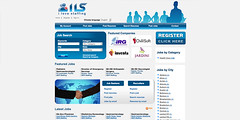A Collection Of Expert Website Design Tips
No matter what level of experience you may or may not have with producing web sites, you probably realize the significance of good design. If you want visitors to enjoy your site and revisit it over and over, you need to build a site that is attractive, easy to use, and stuffed full with useful information. The tips below serve as a good starting point for making a great web site.
Be sure there are no broken links on your website. The right time to make this check is well before you upload a page and take it live. This is necessary because when you have visitors come to your site they will find that the information they want to see is not available anymore and if this is to happen a lot on your site, they will leave. To keep this from happening, check everything to make sure that it works.
When you are seeking a hosting service to put your website on, do your research and be 100% sure of what is included within the cost. Disk space, bandwidth and CPU usage are some of the things you need information about. Know what you’ll end up with, if you decide to go forward with it.
You should not go overboard using JavaScript. While it can provide a large variety of ways to build a more responsive and transparent website, it can cause problems for some of your visitors. Each web browser displays content differently, and your visitors will be using many different versions of each software platform. Some of your readers are not going to have the most recently updated version of their browser. In addition, not everyone keeps JavaScript enabled within their browsers. These things prevent users from making use of your website.
If at all possible, you should set aside a significant block of time every day to devote to web design. Dedicate some time since this allows you to complete some work, instead of doing some here and there. If you stay motivated and work really hard on your website, your skills as a web designer will increase. You will also find that you are more able to remember html code, so you will no longer have to keep referring to reference pages.
Consider using shared hosting and avoid the VPS or dedicated host. In the beginning you will not know the amount of traffic that will visit your site, so it is best to not pay more than you really need to at first.
Every page you create needs to have its code validated. There are a lot of WYSIWYG editors that add junk codes to the website design. Use a validation service to check your code if you use this type of editor. The W3C website has a tool you can use for free, so make sure to bookmark it.
Be certain that everywhere your logo appears on your site, the logo links back to the home page of your site. Over time, most people have started to expect to find a clickable logo that takes them to your main web page. A static logo can irritate your users, because that makes them hunt for a separate “Home” link. Making your logo clickable is just good design.
A search feature needs to be integrated into the home page and any subsequent pages to follow. You make your site much easier to use and more accessible all in one shot with this search offering. It is not complicated to incorporate a site search, and it will pay off in a big way.
Using the tips given above, you can reach for the trinity of good web design: visual appeal, ease of use, and strong connection with your visitors. Doing this will increase you chance of success and bolster you bottom line at the same time



